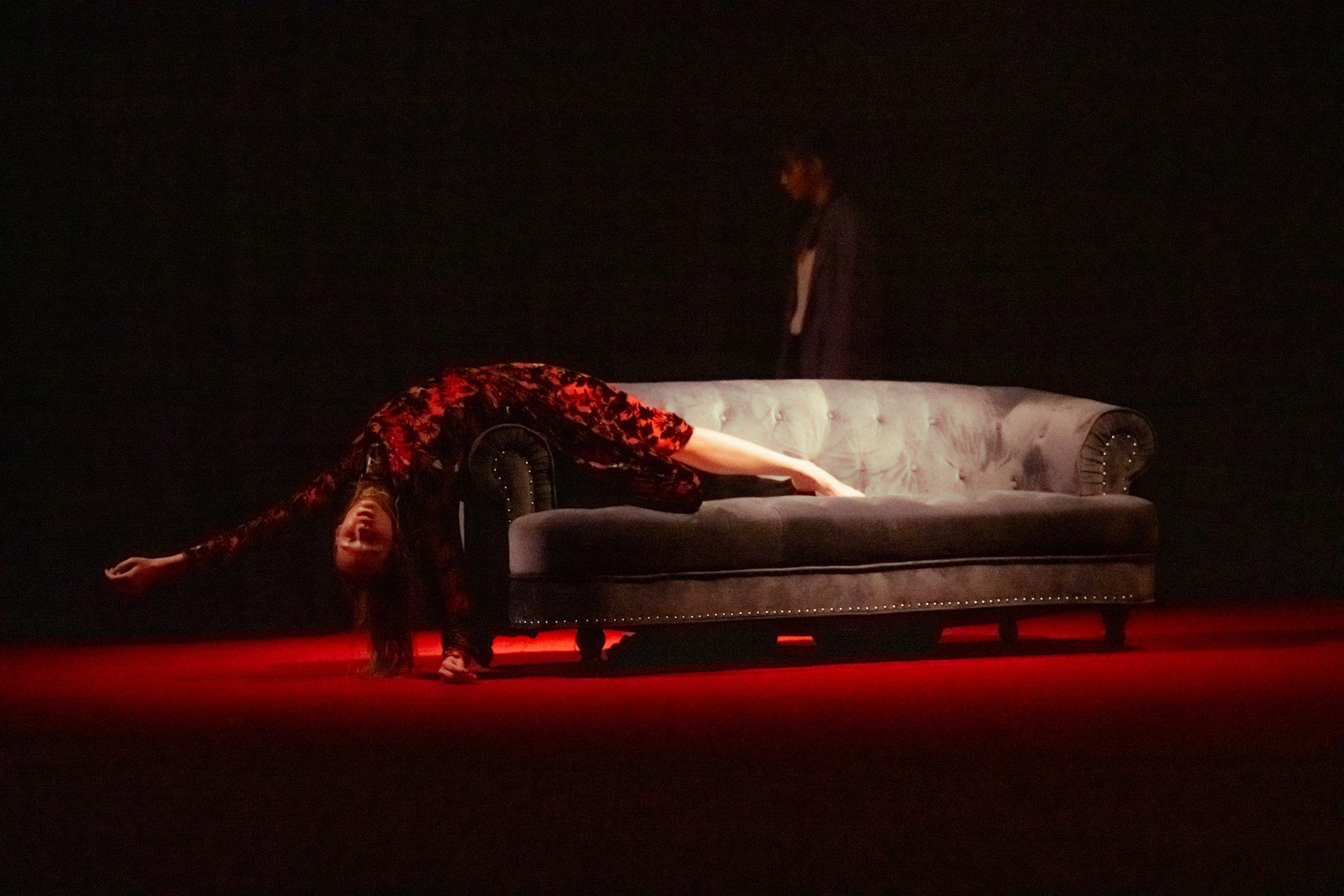Anyone who has taken a dance class knows that dancing on carpet is miserable. Sure, a dense shag can cushion your fall, but it’s definitely not worth the friction; a mere pirouette will wreak havoc on the balls of your feet. For this reason, I was surprised when I was greeted by wall-to-wall red carpeting upon entering the LA Dance Project. I was there to see The Missing Mountain by Bobbi Jean Smith and Or Schraiber. The dancers were already scattered about the stage, interspersed among a table, couch, ladder, and piano. One dancer stood clutching a bouquet.
As tendrils of fog wound through the space, the flower-bearer begins to move. The flowers, tightly pressed against her body, obscure her face. As she traverses the stage, she seems to activate one of the others. They sway together for a bit, the bouquet sandwiched between them. When they come apart, the flowers have switched hands, like some botanic residue. These sorts of transfers of happen over and over, as though these exchanges were the “stuff” of the piece itself. In many ways, these encounters are physical ones, of a body giving motion to—or taking it from—one another. Like excited atoms, these interactions at times seem almost too energetic, temporarily engulfing the entire corps in coordinated shivers of movement.
At times, these contagious actions center around an object on stage, like the table or couch. At other times, they respond to an individual dancer themselves, such as one who repeatedly “trust falls” into a net of waiting arms. Despite its lack of plot, there is a restless urgency about the dancers, at attraction at times magnetic; a face follows the journey of another’s foot only a few inches away, a rapid pat that starts in one place quickly skitters elsewhere. Everything feels highly erotic, less in the sense of sexual and more in the sense of a heightened awareness that we might associate with intercourse.
In its drama and ability to surprise, The Missing Mountain recalls the Tanztheater of Pina Bausch and the tradition of German neo-expressionism. In its athleticism and precision, however, it also invokes the neoclassical ballet of George Balanchine. But above all, The Missing Mountain pays homage to the Gaga “language” of Ohad Naharin, in whose Batsheva Dance Company Smith and Schraiber spent many years. In its interiority, exaggeration, and freedom, the work has the hallmarks of a pedagogy centered on the exploration of bodily pleasure.
While ostensibly a dance performance, The Missing Mountain has its fair share of spoken language. In the downstage right corner, a microphone sporadically descends from the ceiling, prompting a dancer clad in a formal suit complete with coattails to run over to announce the weather alternately in English and Japanese. Another recurring sequence involves two of the company members seated across from one another, with one giving simple commands the other obeys:
Each episode begins with the question: “Can you become a mountain?
“Yes,” the other replies.
“Show me.”
¤
Photo credit: Josh S. Rose
LARB Short Take live event reviews are published in partnership with the nonprofit Online Journalism Project and the Independent Review Crew.
LARB Contributor
Brandon Sward is an artist, writer, and organizer in Los Angeles. He used to edit the LARB Short Takes section, and is currently at work on a book about growing up queer and biracial in Colorado Springs, the “Evangelical Vatican.”
Did you know LARB is a reader-supported nonprofit?
LARB publishes daily without a paywall as part of our mission to make rigorous, incisive, and engaging writing on every aspect of literature, culture, and the arts freely accessible to the public. Help us continue this work with your tax-deductible donation today!
